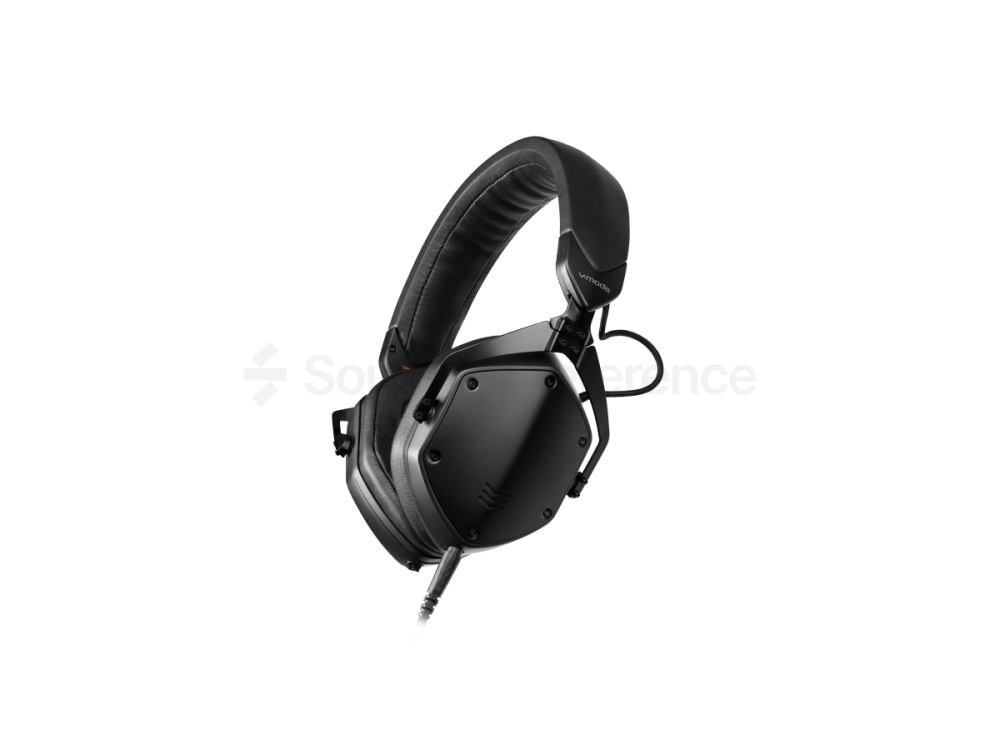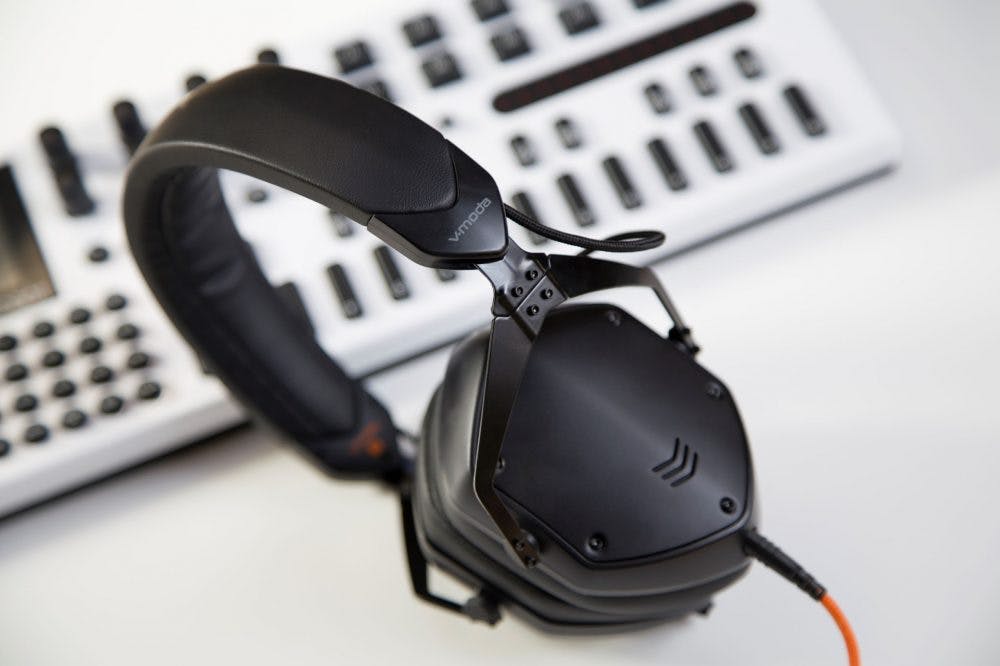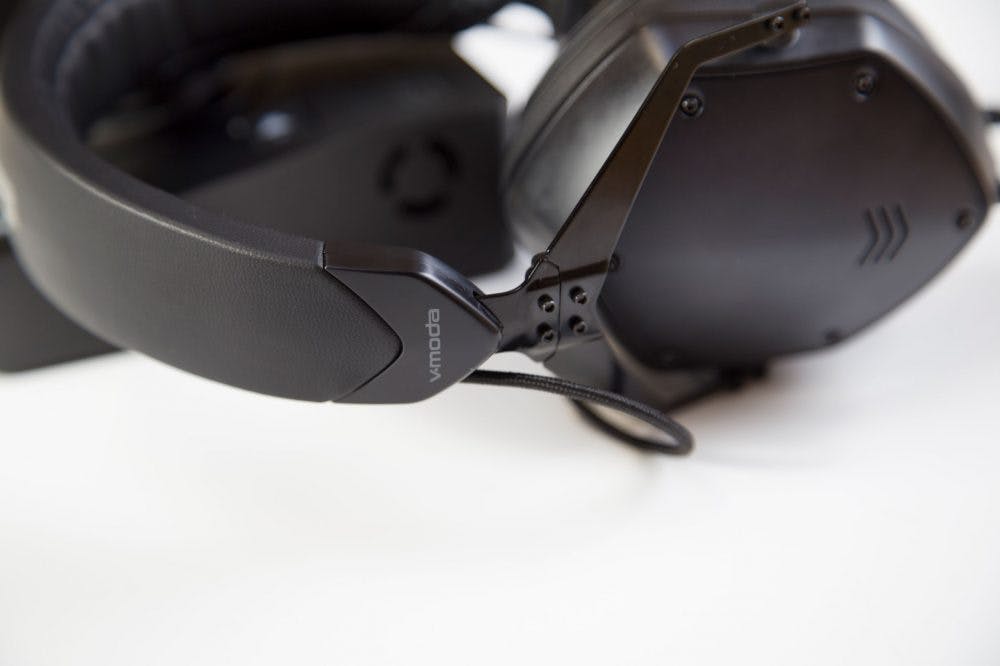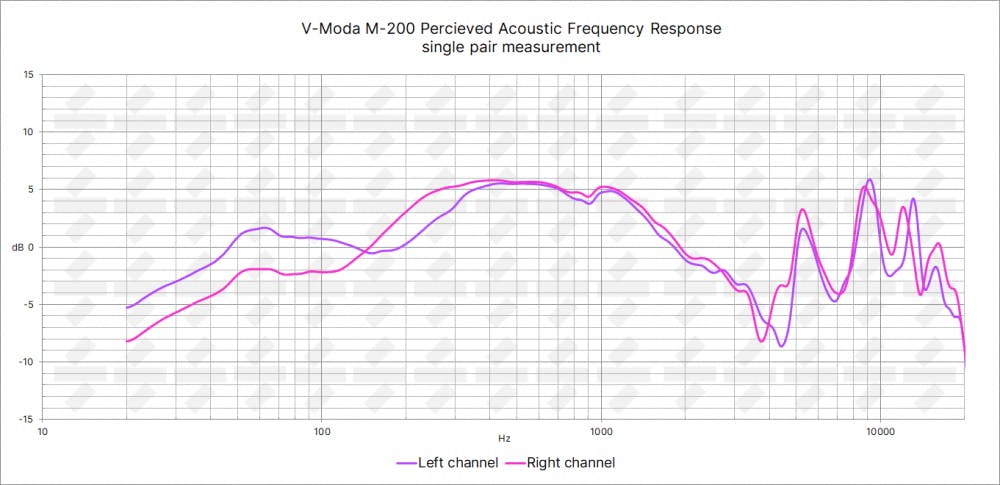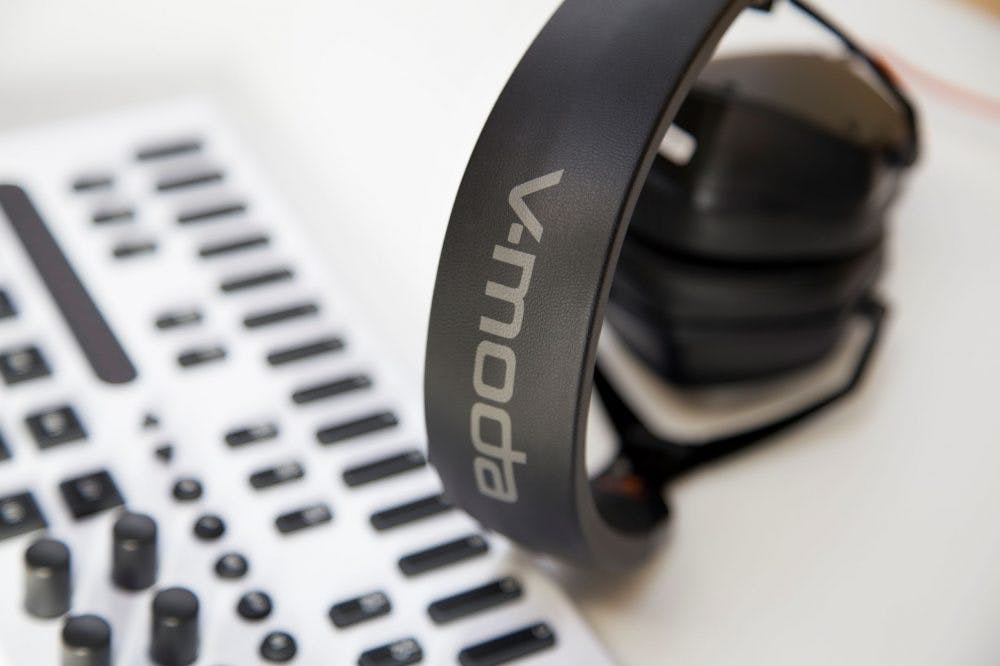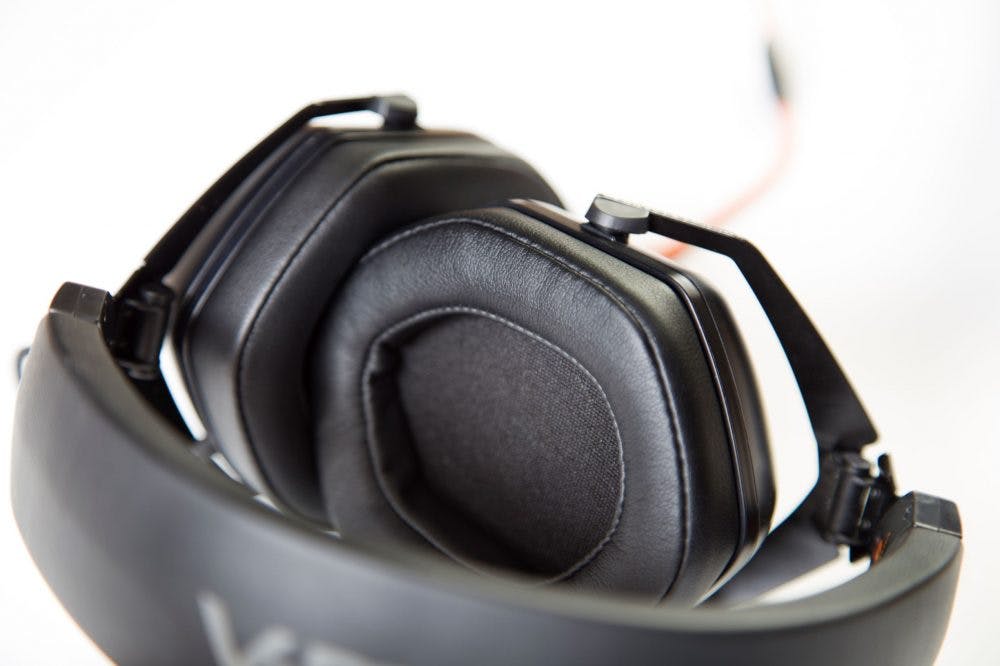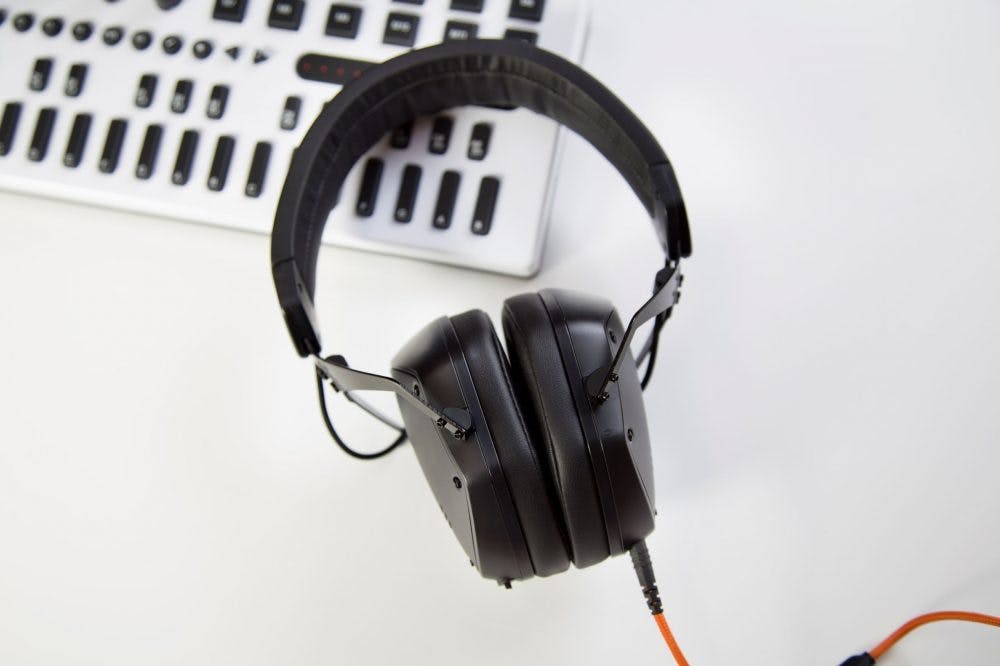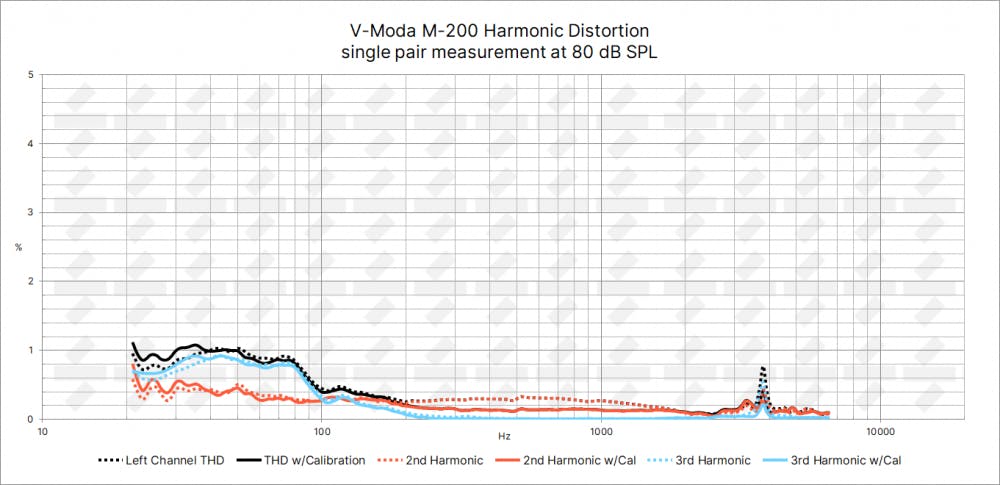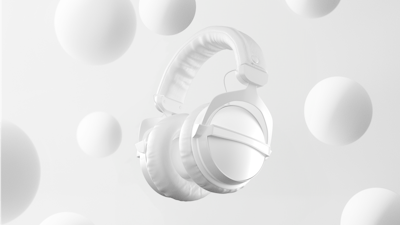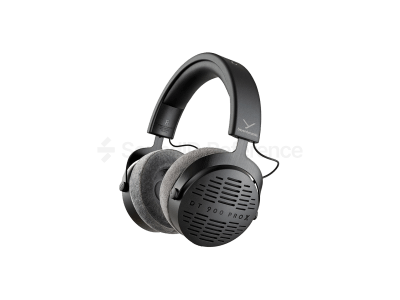One of the latest over-ear offerings from V-Moda, the M-200, is said to be suitable for use both in studio and on street. This makes us wary right from the get-go and upon unboxing and checking out the included cables, M-200 leaves an impression of consumer headphones, not studio. Still, as far as we’re concerned, neutral and accurate sound is the only truly required property of headphones for serious production/mixing/mastering work. Can M-200 deliver that and prove studio-worthy?
- Good build
- Foldable design
Pros list with SoundID Reference calibration
- Neutral frequency response
- Channels don’t match
- Questionable value for money
- Adaptiveness weaker than rivals
There aren’t that many headphones that are marketed for studio use yet have such low impedance, thus making them very mobile device friendly. There really is no setup where squeezing enough volume out of M-200s can be an issue.
Most of the parts used in M-200 are plastic with the exception being the hinged metal yokes, which allow them to fold for easier transportation. Ear pads and headband are covered in soft (yet, according to V-Moda, durable) PU leather that feels great to touch. In the M-200 box, you’ll find a compact semi-hard case, 3.5 mm to 6.3 mm adapter and two cables, a 1.3 m long one with mic and a 1.2 m one without – both terminated with a 3.5 mm jack. The coolest feature though must be the super easily detachable magnetic ear pads, so switching out a worn set for a new one can be done in a few seconds. The same can’t be said for most rival headphones.
Another uncommon and neat feature is the option to choose which ear cup to connect the cable to.
Overall the build feels quite solid and good, but maybe not worth €350. Nevertheless, there isn’t much to complain about regarding the build, apart from the included cable situation being suboptimal. Since V-Moda is selling them as studio headphones, it would’ve been more convenient for users if the cable without the mic came with a threaded 6.3 mm adapter.
M-200’s have a unique sound signature, there aren’t that many closed backs that don’t follow the “smiley face” curve. The sub bass extension is very good and bass response overall is quite flat, if we ignore the channel mismatch. Moving up the frequency spectrum, there’s a weird, very wide bandwidth boost spanning from about 150Hz all the way up to 1.5kHz, followed by abrupt peaks and dips in the high-mids and highs. The absence of 4-5kHz paired with the super-wide low-mid boost result in an unusual, mids-forward sound, that is very uncharacteristic of headphones. All in all, these are nowhere near the worst offenders when it comes to sound coloring, but since their curve is so unique, there’s little use in referencing your work on them, as there really is no other headphone model that sounds alike M-200.
All pairs we measured consistently showed the same 3dB channel mismatch from 200Hz downwards, which reminds us of Audio Technica’s ATH-M50x. Given how consistent the channel difference is, it appears that it’s not just that we got unlucky with a bad batch of headphones. It’s likely that every single one of the M-200’s out there suffers from this.
Regarding the extended session comfort, none of our testers were fans of the M-200. A big factor contributing to that is the increased clamping force that on the other hand helps to isolate you from the outside world and also keeps the sound from leaking, thus making them a suitable option for tracking.
The €350 price tag places the M-200’s in the premium category and while the build is pretty solid and THD performance great, these strengths do not overpower the shortcomings and make them a hard sell.
THD performance is one aspect where the M-200s shine. The output remains clean even when pushing 90dB SPL, so great performance from V-Moda here.
How accurate and consistent is the correction effect among different listeners?The ability to deliver the same perceived acoustic frequency response to a wide range of listeners, the headphone property that we call adaptiveness, is not where M-200s excel. Due to differing levels of seal, the bass response between listeners will vary more than for some rivals and the high-mids and highs too will fluctuate at least +/-3dB in different frequency ranges. This also means that the calibration accuracy will not be as great as with other headphones in the same price category – Aiaiai TMA-2 HD or Focal Listen Professional.
How much do they differ pair to pair in terms of frequency response?The answer is very little. All pairs within our sample pool were pretty much identical from 20Hz up to 3kHz, then going higher a few very narrow bandwidth differences came up that weren’t significant enough to cause concern. This improves the model average calibration profile’s accuracy, however, it still isn’t great due to the consistent channel balance issues that can’t be addressed with a mono profile.
Rating
Conclusion
M-200’s feel like they might be V-Moda’s take on Audio Technica ATH-M50x, just making them double the price and more fancy. Funnily enough, they even share the most notorious flaw of M50x – the poor channel balance. Unfortunately, it’s hard to recommend M-200’s for critical listening tasks where high accuracy is required, especially given their price. While passive noise isolation is great and tracking is one job where M-200’s can come in handy, still, there are headphones that are better suited for that and cost a fraction of the price. If you like how they look and don’t mind spending €350 for recording headphones, go for it! But if accurate sound is paramount, calibrated Focal Listen Pro’s beat them and still can be used for tracking.
Final Rating
Calibration Enabled
Calibration
